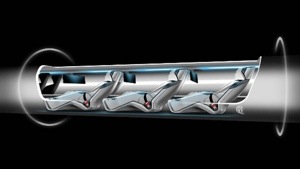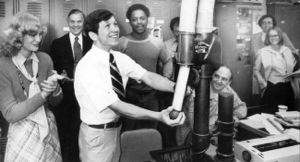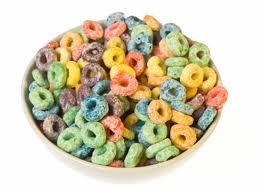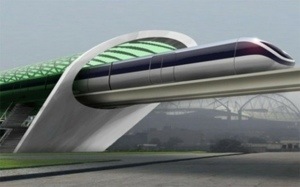; Imagine sitting in a sealed pressurised car shaped capsule with 27 other passengers travelling at 1100+km/h (660mph) in a near vacuum through a tube in an electromagnetically suspensed vehicle.
Imagine sitting in a sealed pressurised car shaped capsule with 27 other passengers travelling at 1100+km/h (660mph) in a near vacuum through a tube in an electromagnetically suspensed vehicle.
The tube would be built on pylons above or next to the current California Interstate 5 highway between Los Angeles and San Francisco reducing the 380-mile (610km) journey between the two cities to “about half an hour”. One major advantage of this system is that riders could go directly from city centre to city centre.

The proposed Hyperloop is a “cross between a Concorde, a railgun and an air hockey table.” it combines the principle behind those vacuum tubes that used to handle paperwork in 19th century buildings with a version of a maglev train.
The hyperloop capsules would ride on a cushion of air forced through multiple openings at the capsule’s bottom, reducing friction. The capsules would be propelled by linear induction motors placed at intervals along the elevated tube. The system would all be powered by solar panels.
The capacity of the system would be a 28 person pod every 30 seconds. This would be equivalent to 3360 passengers an hour. This is equivalent to three high speed trains like the TGV or 12 Boeing 737s an hour. The quoted price of the proposed Los Angeles to San Francisco journey is US$20.00, one way. Presumably all one class!
US entrepreneur Elon Musk co-founder of online payment service PayPal, electric luxury carmaker Tesla Motors and rocket-building company SpaceX is behind the hyperloop concept, which he claims would cost billions less than the proposed California High speed project. His idea enjoyed huge media coverage this week. Not bad for a system that currently consists of a few sketches and a PDF document.
The idea of a hyperloop shot sounds terrifying to me. Being fired down a dark drainpipe without personal space, no toilets or drinks, no windows and no view out. Something claustrophobic customers may not welcome. Wonder what the acceleration would feel like?
In 1888, Jules Verne’s son Michael Verne wrote “Un express de l’avenir” (An Express of the Future) in which he laid out a vision for a trans-Atlantic tunnel powered with “-the same principle used in the post office pneumatic tubes.” “We make a trifle over 1,720 miles an hour,” the Colonel said. “Our bellows can create and maintain a current of air powerful enough to move a train 3,500 miles–Boston to Liverpool by our route–with nearly the velocity of a cannon ball.” In the 1960s, designers planned how this could be engineered proposing a 5,000 kilometer-long near-vacuum tube with “vactrains,” reaching 8,000 kilometers (5000mph) per hour, allowing passengers to travel between New York and London in 54 minutes.
Is the current hyperloop proposal the fruition of this dream? or the first hyperfruitloop plan?




Leave a Reply